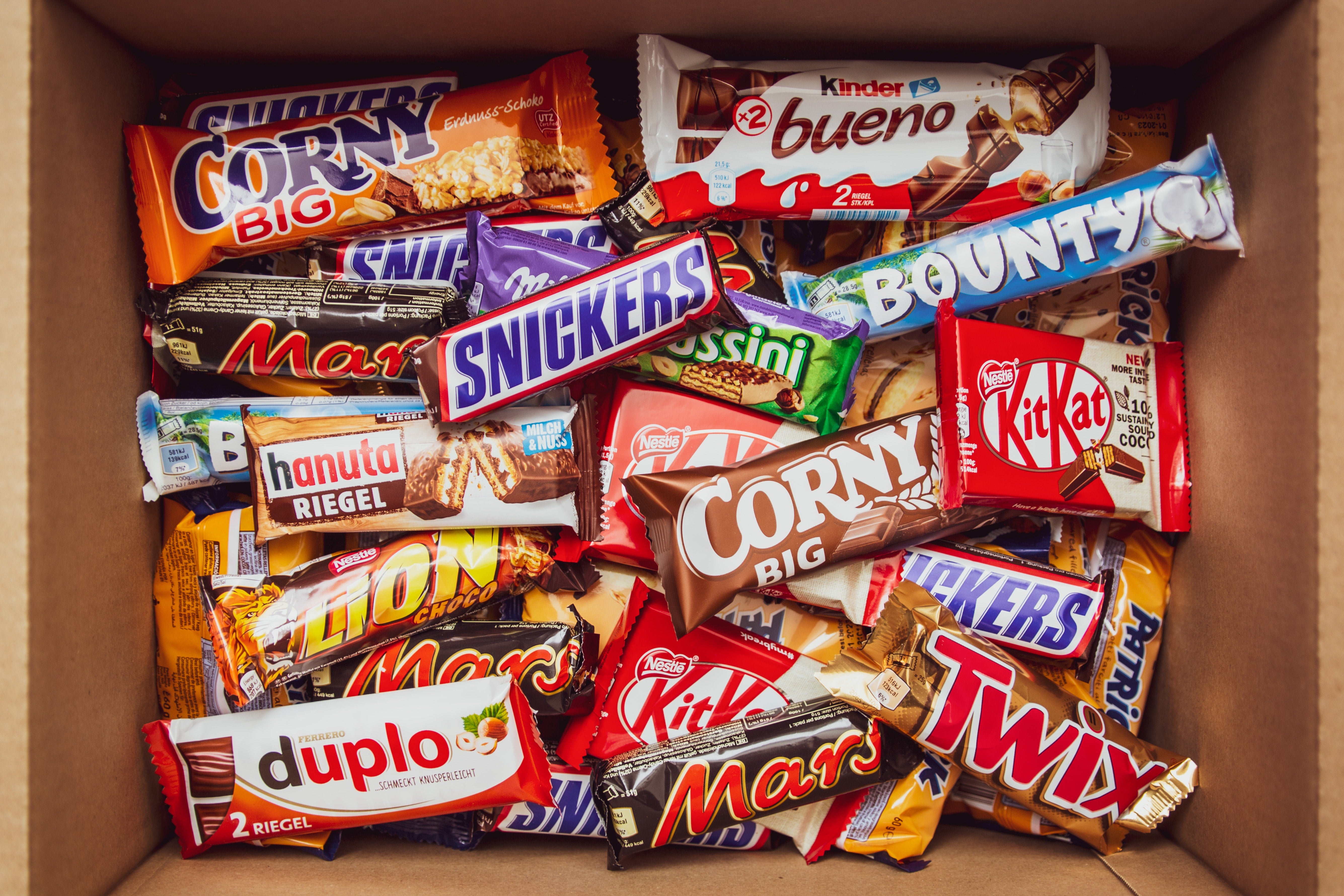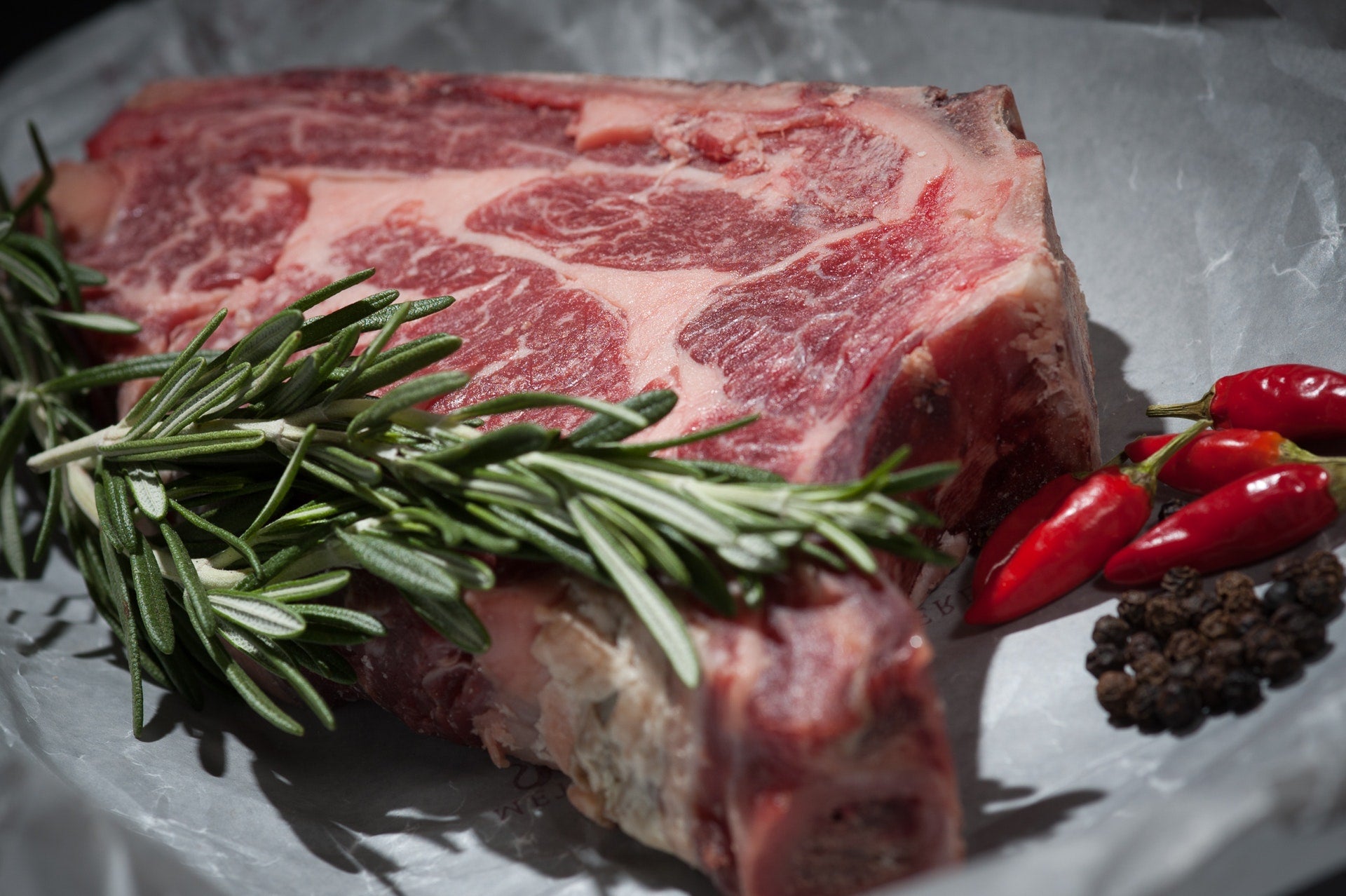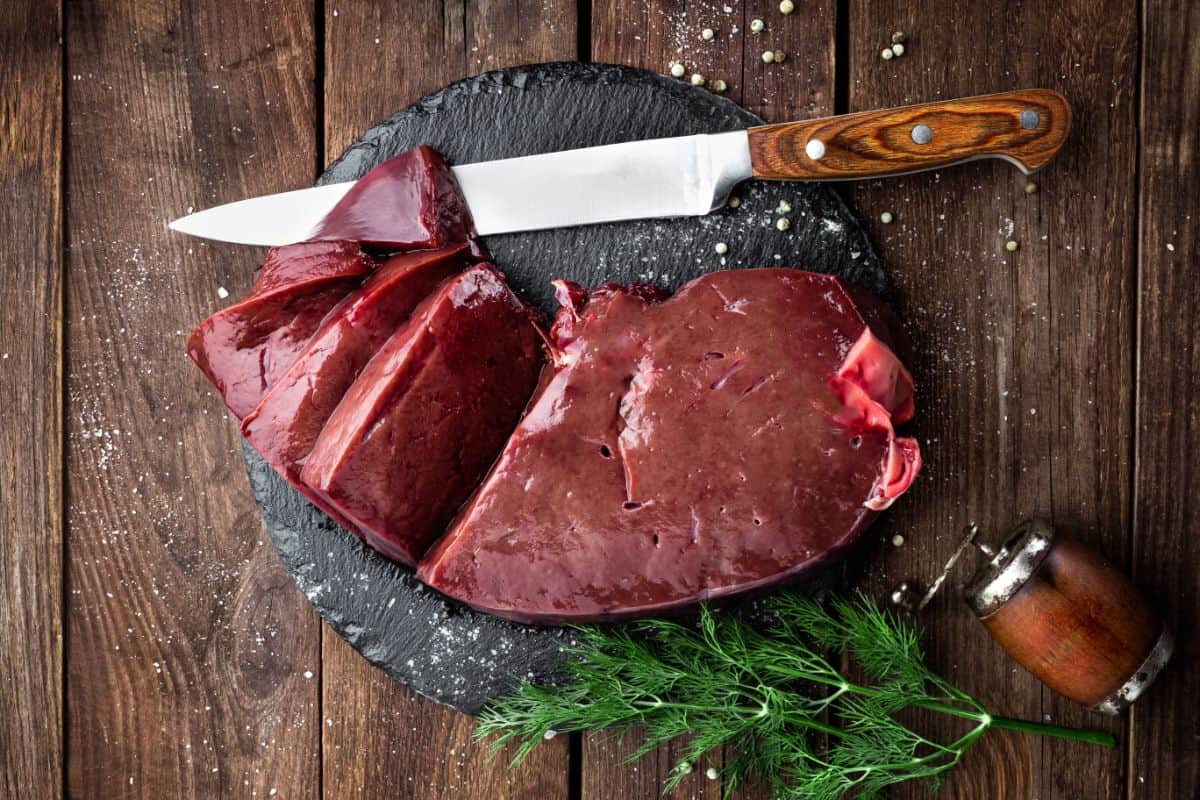Alongside the ‘meat is bad for your health’ narrative comes perhaps the one that is the single biggest motivator for people to switch out burgers and steak for tofu and chickpeas. Climate change.
While there is no denying that climate change and food sustainability are very real issues, pointing the finger at ruminant animals as the main culprit is just downright bizarre if you ask us.
Let it be noted that we are discussing RUMINANTS, not chicken or pork. Ruminants are defined as animals that graze on grass. It is clear that chicken and pork are far less sustainable, given that they are raised mostly indoors, fed heavily sprayed, mono-cropped grain and antibiotics.
This discussion is around beef and to hopefully shed light on why we’re pointing our fingers the wrong way.
Greenhouse Gases
You’ve all heard about the burping cows and methane emissions. The idea that cows are responsible for emitting the most greenhouse gases has been touted far and wide for a number of years now. These statistics were originally published in a 2006 report by the UN Food and Agriculture Association called Livestock’s Long Shadow. However, it later came out that it was informed by bias (1).
For example, a more accurate estimate is that in the U.S. cows are only responsible for less than 3% of emissions (2).
The Biogenic Carbon Cycle
Many people misunderstand greenhouse gases. Methane from cattle begins as CO2 that’s already in the atmosphere. This is an important distinction because the narrative puts this in the same category as methane that’s dug up through fossil fuel extraction thereby releasing additional amounts into the atmosphere (creating new warming).
Ruminants are part of a natural cycle here and, given their unique digestive systems, are able to break down the carbon that plants absorb and release it as methane. 12 years later, the methane converts into carbon dioxide through a process called hydroxyl oxidation. What happens next? This carbon RETURNS to the soil. Cows are effectively carbon recycling machines and can be completely carbon-negative and can help remove carbon from the atmosphere (3,4).
Though it is superior for the environment, there are still questions. The time for a calf to mature for slaughter takes time, and how we can ramp this up onto a large scale to feed a growing population is still unclear. But it's certainly an avenue we must pursue if we want to save the most nutrient-dense food source we have.
Water Footprint
What many don’t know is that all beef is ‘grass-fed’, meaning they start their lives on pastures. They are then typically ‘finished’ with grains in a feedlot.
Now, the argument that cows require a ton of water for production has also been misunderstood. Given that cows - grain or grain finished - will utilise what is known as ‘green water’. This is a fancy term for natural rainfall. In typical cattle production, the green water number is about 92%, and 98% in grass-finished beef. Since ‘green water’ is mainly rainfall, it falls nicely within the parameters of the ‘water footprint’.
Conversely, ‘blue water’ is water that comes from aquifers and irrigation methods (check out waterfootprint.org if you want to learn more). A 2018 analysis of almond production showed that they use almost entirely blue water, with 1.7 gallons per almond (5). In Nicolette Hahn Niman’s book titled, ‘Defending Beef’, she notes that the amount of water for grass-fed beef is approximately 100 gallons per pound to produce. So, a pound of beef has far less of a water footprint and is far more nutritious and beneficial to health than 100 blue water-raised almonds.
Soil Erosion
We all know cow poop is a fantastic fertilizer. Adding water and microorganisms improves biodiversity and helps to sequester carbon back into the earth. Grazing stimulates grass growth. They stomp around on the grass, creating pockets for rainwater and enabling seed germination to occur. Does this happen in a crop monoculture system? Nope.
Cropping the soil (like you see with soy and corn) takes out nutrients and has to be replenished after each harvest. Instead, they deplete soil integrity and ruin biodiversity through pesticide spraying.
And without the enriching fertilizer from cattle, the soil is unable to heal. This does not sound like a sustainable solution moving forward at all. By allowing cattle to fertilize and regenerate soil, it can attract new wildlife and rebirth whole ecosystems.
Nutrition and the Growing Population
Malthus's theory of population, in simple terms, states that the population will grow more quickly than the food supply. Population growth is inevitable. And the notion to remove meat from our diets, or significantly limit it has the potential to spell disaster. Simply put, this will put us on a trajectory in which we will be feeding more people, nutritionally inferior food. Result? More deficiencies and sick people. The concern here is the impact on health services. If the recent pandemic was any indication, they can only manage so much. If and when another pandemic rolls around, what would be the compounding effect if the majority of humans had compromised immune systems? We know that B vitamins, found predominantly in bioavailable animal foods are responsible for various critical health functions – including metabolic function. For example, vitamin B1 deficiency has been associated with increased rates of obesity (6). And a 2017 review showed that 31% of the U.S. population is at risk for at least one vitamin deficiency or anaemia, with 32% having an insufficient vitamin B6 intake (7). With the standard western diet, we’re already on a worrying trajectory. Switching to plant-based would only make matters worse.
And low-income countries will bear the full force of this dangerous prospect. The abundance of micronutrients, dietary fat, and protein is critical for the survival of families and communities in poverty-stricken nations. A single cow can feed a family for 6-12 months while providing the sustenance to keep them strong and healthy. This is something we can’t wrap our heads around. The ramifications of taking animal foods away from continents like Africa, and replacing them with nutritionally inferior food sources would be catastrophic. Frankly, going plant-based is a privileged choice. In western countries, one can walk into any supermarket and choose from an array of imported fruit, vegetables and plant-based protein alternatives. We have to keep perspective here. A 2014 UN study concluded that over a billion people consume inadequate amounts of protein and this lies largely in developing countries(8).
Damaging Ecosystems
Here’s another argument that needs to be closely examined. Plant-based advocates often claim that livestock farming is killing our ecosystems. Let’s consider the central argument around the Amazon rainforest.
Here’s what’s really happening. The policy is that whoever clears the land in the Amazon region gets to own it. After harvesting the lumber, the land is burned for agricultural use. But it’s not immediately ready to be cropped yet, so cattle are used to graze and further clear it and some of these animals illegally make their way into the beef trade. But most importantly, after they have grazed and fertilized the land, it is used primarily for soy farming.
Much of this soy is manufactured into soy cakes and shipped to China to feed chicken. This chart here shows how much soy Brazil has imported to China in recent years. So, blaming cattle for Amazon deforestation is quite simplistic.
While it’s true a large proportion of the soy produced is used to feed cattle, it demonstrates that this is a policy issue. As well as an issue around the methods used to raise cattle. It’s not the cow - it’s the how!
Conversely, we can see just as devastating an impact of mono-crop agriculture. Tilling the land, fertilization and pesticides destroy surrounding ecosystems and kill wildlife. For instance, almond milk production killed around 50 million bees in 2018-2019 (see the article here).
Sustainable Grazing: Regenerative Agriculture
Easily the most sustainable (and ethical) approach is to use a system that mimics how ruminants used to roam. A system known as “holistic range management” mimics the grazing patterns of wild animals (check out this TED talk to learn more). By closely managing herds, it can renew soil integrity and promote carbon sequestering. Picture those Western movies where you’d see wild Buffalo roaming the great plains of America. A method like this, commonly known as ‘regenerative agriculture’, is an approach to livestock farming that is ecologically friendly and aligns with our history, by raising healthy, grass-fed and finished ruminant animals that used to roam freely before intensive livestock farming came about.
Conclusion
The currently accepted notion that ‘beef is bad’ needs to be re-examined. And cows might just be the key to solving our problems. Indeed, factory farming is NOT a sustainable solution, but neither is mono-crop agriculture. If you ask us, it seems illogical to reduce (or completely eradicate) beef considering the critical role ruminants play in human health and regenerating ecosystems. While there are challenges to scaling regenerative agriculture to feed a growing population, it seems like an imperative avenue to focus on if we want to heal the landscape and keep future populations healthy. Ultimately though, cows aren’t inherently the problem here. It’s policymakers and corporations who continue to push unsustainable food production methods for financial gain.
Sources
1. UN to look at climate meat link. (2010). news.bbc.co.uk. [online] 24 Mar. Available at: http://news.bbc.co.uk/1/hi/8583308.stm [Accessed 19 Oct. 2022].
2. Pitesky, M.E., Stackhouse, K.R. and Mitloehner, F.M. (2009). Chapter 1 - Clearing the Air: Livestock’s Contribution to Climate Change. [online] ScienceDirect. Available at: https://www.sciencedirect.com/science/article/abs/pii/S0065211309030016 [Accessed 3 Aug. 2022].
3. Anonymous (2020). The Biogenic Carbon Cycle and Cattle. [online] CLEAR Center. Available at: https://clear.ucdavis.edu/explainers/biogenic-carbon-cycle-and-cattle#:~:text=As%20a%20by%2Dproduct%20of [Accessed 19 Oct. 2022].
4. Pelletier, N., Pirog, R. and Rasmussen, R. (2010). Comparative life cycle environmental impacts of three beef production strategies in the Upper Midwestern United States. Agricultural Systems, 103(6), pp.380–389. doi:10.1016/j.agsy.2010.03.009.
5. WATER FOOTPRINT + ALMONDS. (2018). [online] Available at: https://almonds.com/sites/default/files/2020-05/Water_footprint_plus_almonds.pdf.
6. Kerns, J.C., Arundel, C. and Chawla, L.S. (2015). Thiamin Deficiency in People with Obesity. Advances in Nutrition, 6(2), pp.147–153. doi:10.3945/an.114.007526.
7. Bird, J., Murphy, R., Ciappio, E. and McBurney, M. (2017). Risk of Deficiency in Multiple Concurrent Micronutrients in Children and Adults in the United States. Nutrients, [online] 9(7), p.655. doi:10.3390/nu9070655.
8. Wu, G., Fanzo, J., Miller, D.D., Pingali, P., Post, M., Steiner, J.L. and Thalacker-Mercer, A.E. (2014). Production and supply of high-quality food protein for human consumption: sustainability, challenges, and innovations. Annals of the New York Academy of Sciences, 1321(1), pp.1–19. doi:10.1111/nyas.12500.



